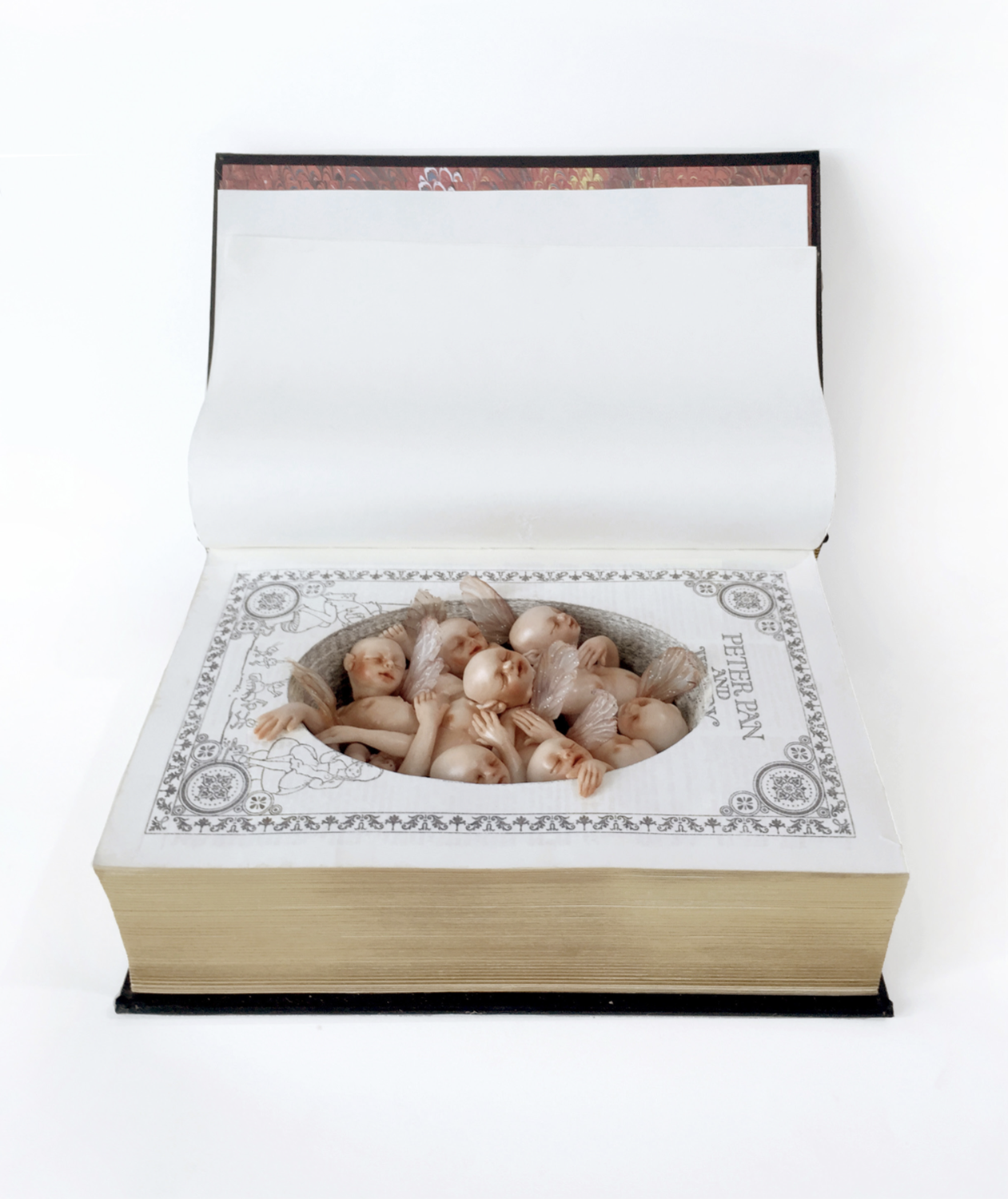If there is a more unsettling yet fascinating fusion of the cute and the grotesque than tiny baby head sculptures, then one would be hard-pressed to find it. Qixuan Lim, born-and-raised in Singapore and now based in Eindhoven, the Netherlands, makes these and several other tiny sculptures as a sideline to her work as an information designer. In addition to the heads of miniature sleeping babies, Lim also fashions ceramic sculptures of tiny torsos, utensils, hearts (occasionally with teeth), animal skulls, pigs, and forearms—most of them about the size of a thumbnail. Like the unknown artist who sculpted tiny, ornate prayer beads depicting heaven and hell, her work is at once beautiful and disturbing. And like Stéphanie Kilgast’s delectable, miniature food sculptures, Lim’s extremely small ceramics are uncannily crafted.
Lim, who has also worked as a graphic designer and in editorial and branding, tells Creators that she finds it impossible for her everyday work to meet with her artistic practice. As an information designer, she is working to convey simple, clear ideas in a way that cuts through information overload. In a way, her tiny sculptures, so simple yet complex, do something similar: they break viewers out of the everyday humdrum of the internet’s endless procession of images.
Videos by VICE

Lim started sculpting about five years ago. At the time, she was working on an art show during which she was mentored by Pann Lim, a respected figure in Singapore’s the creative scene.
“At that point, I had never sculpted anything seriously before, but I have always been fascinated with morbid curiosities and science fiction,” Lim says. “I think it was this personal fascination fueled by the hunger to impress someone I really respected that resulted in my first sculptures. I think I just fell in love with sculpting right after that and wanted to do it more.”

The tiny sculptures are small breathers Lim takes from her design work. Though she works on commissions and does shows when opportunities arise, the small sculptures are more for fun—things that Lim makes rather spontaneously, which she believes makes them more playful. Her fixation on baby heads and other body parts grew out of a fascination with the tactility of flesh and skin. Lim admits to always being drawn to what many people call “creepy-cute”—creations that manage to be simultaneously ugly, gross or creepy while maintaining an adorable quality. But, she isn’t into things that are all-out grotesque.

“I think the baby heads are appealing to me because they carry with them a sense of vulnerability and fragility, but at the same time looking quite morbid and discomforting,” says Lim. The tiny sculpting, meanwhile, came about because Lim had tiny bits of leftover clay from a few commissions and didn’t want it to go to waste. “I just fiddled around with it and came up with these little heads hidden in pistachio shells, and my friends absolutely loved it and encouraged me to make more.”
Lim sculpts the tiny objects using polymer clay and a mix of colors like beige and red. She doesn’t mix them very evenly, and occasionally layers thin bits of clay until they achieve the relative transparency of human skin or flesh.

“The trick is, use powders, not paint,” Lim insists. “I sculpt with needles and brushes—soft tools are surprisingly good for sculpting—sometimes with the help of a magnifying glass. My works are usually baked in the oven; the same oven which cooks my food and that is not something I should be proud of.”
Sometimes, Lim features the tiny babies breaking out of eggshells or packaged in pill blister packs. Other times she wraps the baby heads in transparent plastic like pieces of candy. Lim had planned to explore this concept in greater detail for a show, but ultimately shelved the idea, though she hopes to one day resurrect the project.

Though design school is Lim’s main priority right now, she intends to produce more works this year, and is currently in talks to exhibit this summer. Lim would also like to start an online store, as there is demand for her tiny sculptures, but she finds the idea of running a store way too stressful. That, and she apparently doesn’t trust postal services.
“Compared to many artists, I am actually quite shy with my works and never take the initiative to write to people or galleries to look at my work,” Lim says. “This is also why I am glad for Instagram, because the platform is so social and it gives my work the exposure I will otherwise not receive.”


Click here to see more work by Qixuan Lim.
Related:
Tiny Food Sculptures Make the Cutest “Small Portions” Ever
Take a Fantastic Virtual Reality Voyage into a 500-Year-Old Gothic Sculpture




